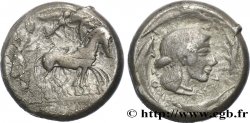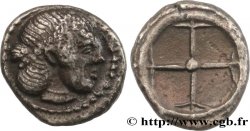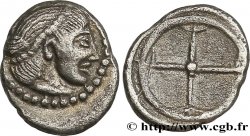bgr_624822 - SICILY - SYRACUSE Tétradrachme
недоступный.
Товар уже продан в нашем интернет-магазине (2021)
Цена: : 1 000.00 €
Товар уже продан в нашем интернет-магазине (2021)
Цена: : 1 000.00 €
Тип Tétradrachme
Дата: c. 470-466 AC.
Монетный двор / Город: Syracusa
Металл: silver
Диаметр: 26,5 mm
Ориентация осей монеты: 7 h.
Вес: 17,02 g.
Редкость: R2
Комментарии о состоянии
Monnaie légèrement décentrée au revers mais bien centrée au droit. Jolie représentation du droit. Fine usure régulière. Patine grise
Ссылки в каталоге: :
Лицевая сторона
Аверс: легенда: ANÉPIGRAPHE.
Аверс: описание: Bige au pas à droite, conduit par un aurige tenant les rênes et le kentron ; l’aurige est couronné par Niké volant à gauche qui pose la couronne sur l’aurige ; monstre marin à l’exergue.
Обратная сторона
Реверс: легенда: N RÉTROGRADE.
Реверс: Описание: Tête d'Aréthuse à droite, les cheveux relevés et retenus par un diadème de perles, entourée de quatre dauphins.
Реверс: легенда: SURA-KO-SI-ON







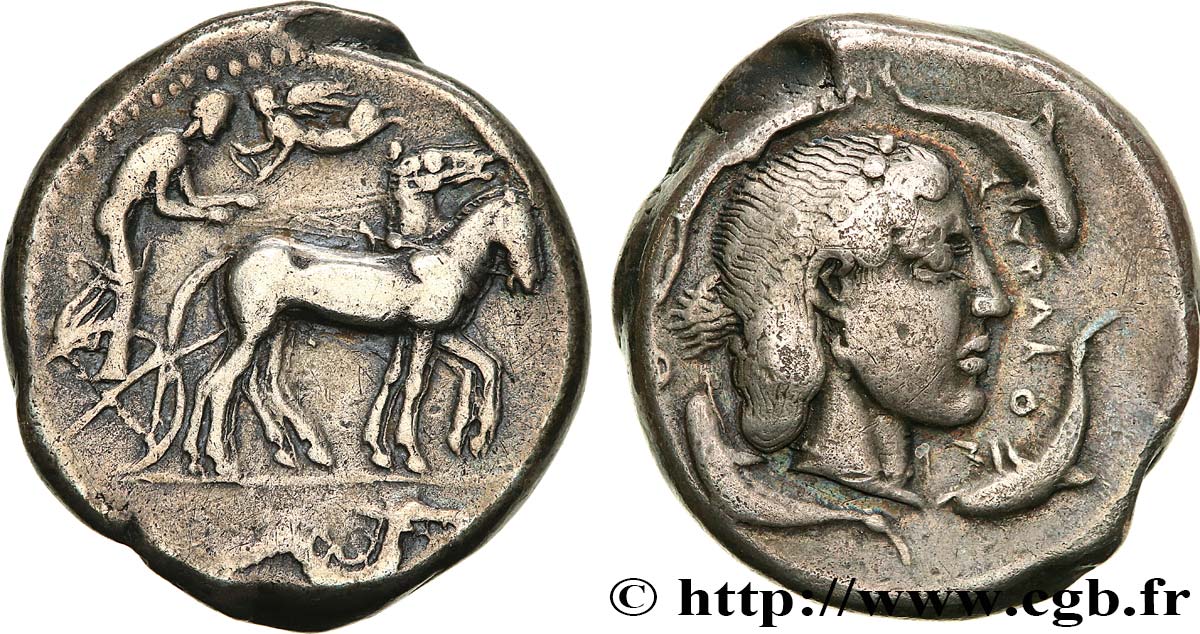
 Cообщить об ошибке
Cообщить об ошибке Распечатать страницу
Распечатать страницу Отправить мой выбор
Отправить мой выбор Задать вопрос
Задать вопрос Consign / sell
Consign / sell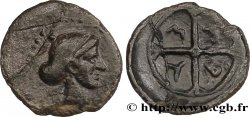
 Информация
Информация

